 The UK’s smart metering is set to be the country’s next Government IT disaster, writes Nick Hunn – saddling consumers with a £12 billion cost on their fuel bills for little or no benefit.
The UK’s smart metering is set to be the country’s next Government IT disaster, writes Nick Hunn – saddling consumers with a £12 billion cost on their fuel bills for little or no benefit.
Having delayed the Fiendishly Complicated United Kingdom Enduring Deployment (FCUKED) of smart meters earlier this year because of technical delays, you might expect that the British Government would have spent some time reviewing the technology they had mandated.
If they had done so, it would have become clear that the program was out of control. Under the surface, too many cooks have ratcheted up the technical complexity to the point where it is no longer fit for purpose. However, it appears that no-one wants to point out that the Smart Metering Emperor is stark naked.
The next big IT disaster
That’s largely because those overseeing the programme don’t have the depth of technical knowledge to understand the implications of what is going on. And as always with big Government driven IT programs, whilst there’s money to be made by the metering industry and consultants, momentum rules.
It seems perfectly justifiable to carry on and saddle consumers with a £12 billion white elephant which will further inflate domestic energy bills. As a result of this lack of due diligence, smart metering is firmly on course to be the next big UK Government IT disaster.
It’s not that there’s a fundamental problem with smart metering, but there are massive mistakes in the way that the UK has decided to do it.
When the programme started, it was seen as world-leading. It should have set a global standard for smart metering, giving UK plc a commanding lead in exporting expertise to the rest of the world and creating long term employment opportunities.
Obsolete before it even started
Instead it has resulted in an out-dated, over-complicated system which will be incompatible with any other solution in the world, cost more than any other, fail to deliver the promised customer benefits, add risk to our energy security, threaten jobs, further alienate customers and make the UK energy industry a laughing stock.
If we look at the issues, the GB smart metering program appears to have a unique capacity not just to duplicate major errors from previous Government disasters, but to combine many of them into one overarching Government-destroying fiasco.
There is a parallel with other UK Government led IT disasters, where a focus on the overall benefit obscured the failures of the underlying technology strategy.
The NHS spine is a good example. Nobody denies the benefit it could have delivered had it worked. Smart Metering appears to be a close cousin, where there is a major disconnect between the strategy and the implementation.
As with the NHS Spine, those at the top failed to comprehend that the underlying technical detail was out of control. In both cases, the specifications lost sight of the benefits and users of the system. Government departments, working way beyond the limit of their technical knowledge allowed vendors to introduce arbitrary new features.
The pattern is all too familiar
The same pattern is apparent with smart metering. Unsupervised specification creep allowed has allowed utilities and vendors to play a game of technical one-upmanship reminiscent of schoolboys competing to see how high they can pee up a wall.
In a further twist, nobody appears to be asserting long term ownership and control of the GB metering specification, allowing it even more scope for constant change, largely defeating its purpose of defining an interoperable standard.
As with the NHS, many within the industry are only paying lip service to the programme. Most utilities don’t want smart metering. In fact they seem to have used the wrong dictionary. It is difficult to find anything smart about the UK deployment, until you realise that the utilities use smart in the sense of “it hurts”.
They consider they have a perfectly adequate business model which has no need for new technology. In many Government meetings, their reluctant support seems to be a veneer for the hope that it will all end in disaster, letting them go back to the world they know, of inflated bills and demands for money with menaces.
They will be used to persecute the consumer
That brings back another parallel with the medical profession’s quiet but relentless opposition to the Summary Care Records scheme which eventually brought it to an ignominious end.
Even when smart meters are deployed, there is no evidence that any utility will use the resulting data to transform their business, rather than persecute the consumer.
At a recent US conference a senior executive for a US utility which had deployed smart meters, stated that their main benefit was “to give them more evidence to blame the customer”. That’s a good description of the attitude displayed by our utilities.
‘Make-believe’ benefits
The other challenge is the eternal one of calculating the financial benefit. Whilst everyone expects Government projects to overrun and under-deliver, smart metering takes this to a level which makes the HS/2 assessments look like models of financial prudence.
Successive analyses have shown no net benefit, so DECC has made up illusory benefits in an attempt to justify the smart metering deployment. Each of these has needed more unproven technical complexity to be incorporated into the meters to deliver the benefits, making the overall cost uneconomic.
So the cycle is repeated until a set of make-believe benefits can finally be submitted to gullible Ministers as firm returns for the programme. Alex Henney – an industry veteran who has charted deregulation and the rise and demise of competition within it, summed up the case as, “civil servants have cooked the numbers to come up with a net benefit”.
Many agree with him. Taken together it’s repeating the classic failure cycle of a changing specification leading to conflict and more change, while driving costs out of control and causing deadlines to slip. In 2012, a Cabinet Office review gave the project a red light and recommended it should be abandoned. DECC drove through the light and carried on.
There is an obsession to make ‘smart’ meters do things which are far better done over other channels, such as demand response and consumer engagement.
Powered by obsolete technology
But because the industry is so technically backward, it’s picked an architecture that is several decades out of date and which cannot deliver the information in the way which customers want.
Today consumers have smartphones. They want the same sort of smart experience from their utility. Instead they’re going to get a retro ’70′s technology experience, whilst paying 21st century prices for it. It’s a back to front world, where utilities are leading the Government down a path that it and consumers will regret.
It is becoming more urgent as consumers scream about the current cost of energy bills and trust in utilities is at an all-time low. The current plan will not deliver short term savings; instead it will see energy bills rise still higher.
A toxic legacy in the making
That’s a toxic legacy for any Government. The party in power when the smart metering bubble bursts will probably find itself unelectable. There is still time to address this, but the current blinkered approach from all concerned is fast driving us past the point of no return.
The European Mandate
The reason we’re where we are derives from a gung-ho interpretation of a European ruling by the previous Labour Government when Ed Milliband was Secretary of State for Energy and Climate Change. His over-reaction was supported by Chris Huhne when he took over as Lib-Dem Minister in the Coalition and was further endorsed without any real scrutiny by the Conservative Charles Hendry. Hence all three parties carry an equal responsibility for its sorry state. What is commonly called the “European 20-20-20 Agreement” [4] was a symbolic piece of marketing spin, where EU leaders got together to promote a snazzy slogan with the mission statement of generating 20% of our energy from renewable sources by 2020, simultaneously reducing Europe’s CO2 emissions by 20%.
The target is largely marketing hype, designed to allow European leaders to look smug whilst other countries continue massive expansion of coal fired power stations [5], making Europe’s posturing effort insignificant. All it does for the European consumer is to make them bear the cost of renewable energy before it is mature, so that politicians can claim that they are helping to save the world. It is the factor behind the “green levies”, which are hurting UK energy consumers by giving uneconomic subsidies to anyone who’s prepared to stick their snout into the feed-in trough. In essence they’re a costly sticking plaster to cover up successive political delays in making any decisions about a proper long-term energy strategy. How Ministers are going to convince consumers to pay an additional smart metering levy on top of this from 2015 is a mystery. Particularly as for most consumers this increase will appear on their bills long before meters appear on their walls.
Despite what is often claimed by our politicians, there is no firm mandate for smart metering within the 20-20-20 directive. The directive only encourages the introduction of smart metering “where economically reasonable and cost effective” [4]. Back in 2007, the consultancy Mott MacDonald performed an appraisal of the costs and benefits of Smart Metering in the UK for BERR [6] and concluded that it has a net present value of minus £4 billion. That inconvenient piece of data was ignored. Germany has just come to a similar conclusion about the costs and walked away from a smart meter deployment [7]. The degree of technical creep in the GB specification means that the cost of the metering equipment within each home has almost doubled from what was anticipated in the Mott MacDonald report, from around £75 to £143. This has added an extra £2 billion to the deployment cost, making it difficult to see how the current GB deployment can have any hope of being cost effective. Moreover, the complexity of the architecture and technology, accompanied by an untried specification, means that it is very difficult to claim that the planned deployment is “cost effective”. It is high risk for the sake of high risk, with little attention to the benefits or an understanding of those risks. So it fails the EU Commission’s criteria for smart metering deployments on both counts.
Download the full, 20 page “Smart Metering is FCUKED” report to read the full story of what has gone wrong with the GB smart metering programme.
** It is technically the GB deployment, as it doesn’t cover Northern Ireland. That in itself is a strange decision, as it leaves Northern Ireland as a no-man’s land between the GB mainland standard and the incompatible IP based approach of Southern Ireland. FCUKED seemed a particularly appropriate acronym for the GB deployment.
Nick Hunn is a self-proclaimed ‘wireless evangelist’ with many years engineering experience working in the field. His passion is technology and its application, particularly with respect to employing wireless to make products and services easier to use.
As readers of his Creative Connectivity blog already know, his key areas of interest are eHealth, especially in the development of consumer medical devices, Smart Energy, Machine to Machine (M2M) applications and Telematics development for Intelligent Transport Systems.
This article was originally published at www.nickhunn.com/smart-metering-is-fcuked/

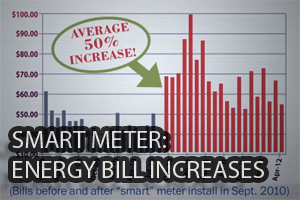
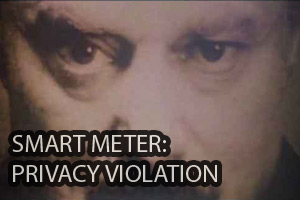



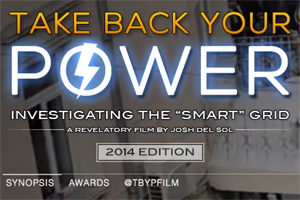




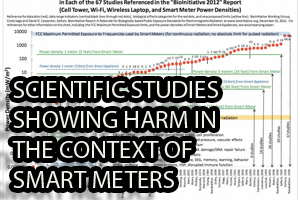



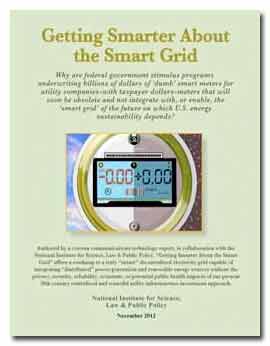

SMARTmeters isn’t about saving electricity, it’s about introducing variable rates according to their definition of availability of power (same model as the ENRON manipulation to California). It’s also about e way direct link to your brain to a master super computer. It’s quantuum programming will be so complicated that Lucifer wil have to inhabit to make it work – and with a direct link to your brain and the data banks recording your every move, it can target and cancel your thoughts and personality, if so desires by the NWO.
Sure what they are doing is illegal but can anyone afford to wait to see that addressed? How about doing something legal and subversive, all in one move?
Here is an idea: Industry and corporations everywhere these days tend to install military grade whole electrical system surge suppressors. They do it because it really saves them money.
In a private home (with or without a smart meter) the better quality surge suppressors are installed in line right after the meter and just before the wires then enter the service panel or electrical panel or circuit box. Less long lasting cheaper surge suppressors can be installed right inside the actual service panel or circuit box by using a spare circuit. It usually takes an electrician about 40 or so minutes to do this.
Even though wireless is still problematic, at least most wireless tends to attenuate somewhat, if a person gains any distance from it or shields wires and walls from it.
As for decent quality surge suppressors, people who use them for residential applications report a noticeable diminishment of insomnia as well as improvement in health, along with noticeably lower bills and reversal of premature burn out of human bio-electricity as well as appliances, electronics and such items as LED lightbulbs, etc.
One can only suppose a surge suppressor might minimize fire hazards as well.
So then, why wouldn’t residential customers in North America do the same thing as industry already does, and use one of these devices?
Sweden offers whole house filters or surge suppressors to residential customers free of charge, but apparently they only offer these to anyone who reports experiencing negative effects from smart meters.
It is not like the utilities do not know that these work, They work so well that if everyone used them, they would lose profit fast.
So then, why wouldn’t even those who don’t feel such effects buy, install and take advantage of the benefits of a whole house surge suppressor, if only to lower bills, to protect appliances and electronics from premature wear, and possibly to undermine data collection and privacy invasion? You do not have to feel health impacts in order to reverse health impacts.
Better safe than sorry.
In fact, wouldn’t whole house suppressors be equally important to use even for an eventual off grid application, when using an inverter to convert DC to AC from solar panels?
Couldn’t a high quality military grade whole house suppressor successfully smooth out the sine wave, stop the total harmonic distortion caused by the smart grid frequencies enabled by these network management and communications devices (vices) such as the so called smart meter.
Why not clean up the transients, and eliminate the DNA shredding spikes now being used to increase charges to the customer?
Word has it such a suppressor reverses negative health effects caused by the SMPS massive spikes.
Rumour has it the use of a whole house suppressor as good as eliminates smart pulses and smart surges delivered into the home via the transmission lines.
Wouldn’t such a perfectly legal installation of one of these effectively undermine the whole grid gouging process?
Maybe even data mining might become impossible with a smoothed out sine wave with little to pulses to “track”.
Wouldn’t a surge suppressor up end over billing via surge laden transmission lines and in effect defeat the whole purpose of the smart gird, the use of pulses to make trillion$?
Couldn’t a high end military grade suppressor designed to address everything from lightening down to minimal ultra low emfs prevent damage to babies, pets, electronics and appliances?
Wouldn’t the addition of a carbon shield all around the meter on both sides of the meter wall then absorb and neutralize the method of delivery prior to its arrival at the suppressor?
So …. Why is no one reporting doing this?
What is stopping people from buying if not a high end one then at very least a half decent short term one for a couple of hundred dollars.
Do we really deserve to suffer and sicken, so as to enable corporate profit?
This very SAME THING is happening in Canada…already the consumer has been told that our electrical bills will be going up by 8 per cent over the next five years to compensate for the ridiculous costs this program has cost the consumer and not only that BUT FORCED to endure…we didnt’ want these fcked up meters in the first place but were FORCED upon the populace by our leaders who I am sure put monies in their pockets to do so…the whole planet is one big corrupt piece of sht run by demonic consciousness out of control and evil to the core…
There is so much EMF in our modern world that to avoid smart meters is like avoiding a drizzle during a downpour. I had a SM installed years ago – being in a rural area, opening the gate for meter readers was a pain. And BTW, after the meter was installed, my bills didn’t noticeable change, the cat didn’t die, and the dog didn’t lose his hair, the crops didn’t fail, birds continued to visit, still see the resident fox, frogs in out pond are as noisy as ever – so get over it.
You are incorrect.
EMFs behave according to the Inverse Square Law, so a key issue here is how close are you to the signal output, how strong is the signal you are picking up, whether the signal is carrying data, pulsing, how often, etc.
Check the signal you get from your smart meter at, say, 1 ft, 3 ft, 10 ft, 50ft, 100ft and 200ft. You’ll note that there is a big difference between the read outs at those distances. You’ll also note that you can actually detect a measurable signal (if your smart meter has actually been activated, that is). The fact that you can pick-up a signal should tell you that it’s adding a LOT of EMR to the environment that was not previously there (at the closer distances, it’s more like adding a thunderstorm to a dripping tap than the other way around as you put it).
With regard to your other comments; you know, there’s so much [cigarette smoke/PCB/BPA/DDT/mercury/lead/asbestos/dioxins/DES/tetraethyllead/MTBE/Fen-Phen, etc. etc.] in our environment nowadays but my cat isn’t dead either. My dog is though. We live in an increasingly toxic world – but the toxins we obliviously surround ourselves with don’t have to kill us immediately to deliver long-term harm.
Just because you and your farm aren’t yet looking like scenes from The Road yet, doesn’t mean this stuff is safe.
You don’t notice the effects from day one. It can take years of exposure, depending on many factors, before differences are noticed – as was the case with me when a mobile phone mast was installed next to my old house.
If you put a frog in a pan of boiling water it will jump straight out. But if you put the same frog in a pan of cold water and slowly heat it up then it will obliviously sit there boiling to death. This is what is slowly happening to our species at the moment.
In the Uk I deal with SWALEC which supplies Wales and I have contacted them and they are very informative as regards Smart Meters. They have told me I do not have to have one and if I do they can take a reading monthly or daily. They say they will ask for my permision and ask which I prefer. This is totaly different to British Gas who I am now leaving as my supplier. I will of coures refuse a Smart Meter and I am working with many people to do the same